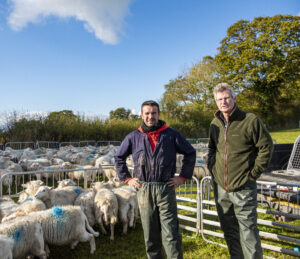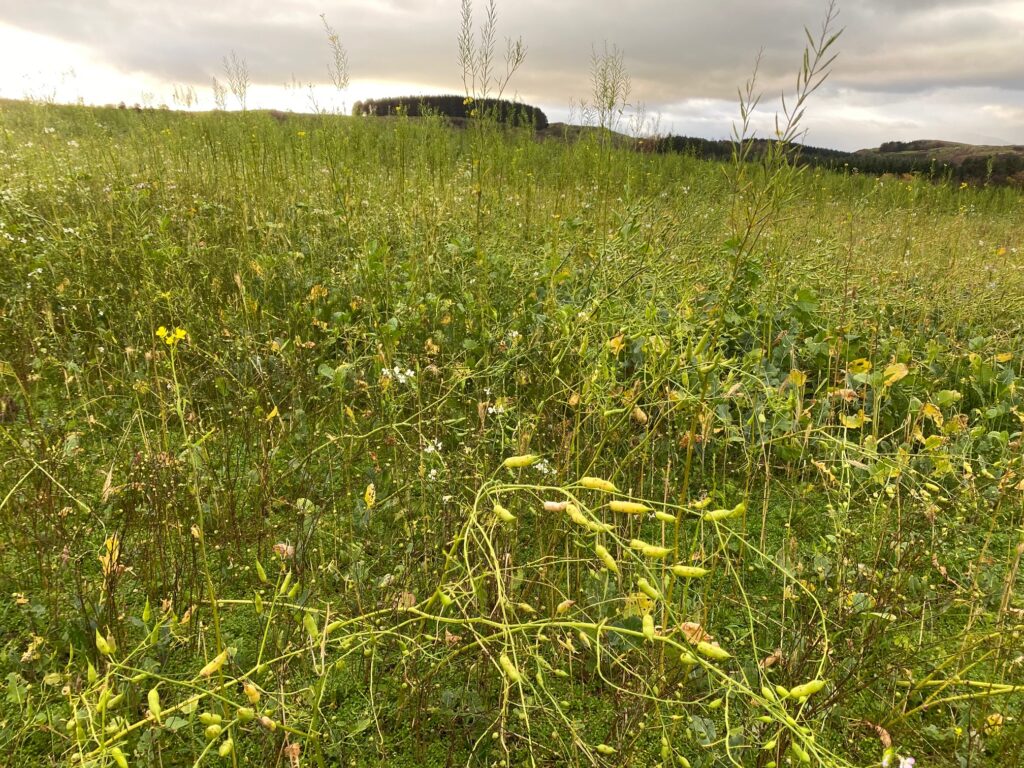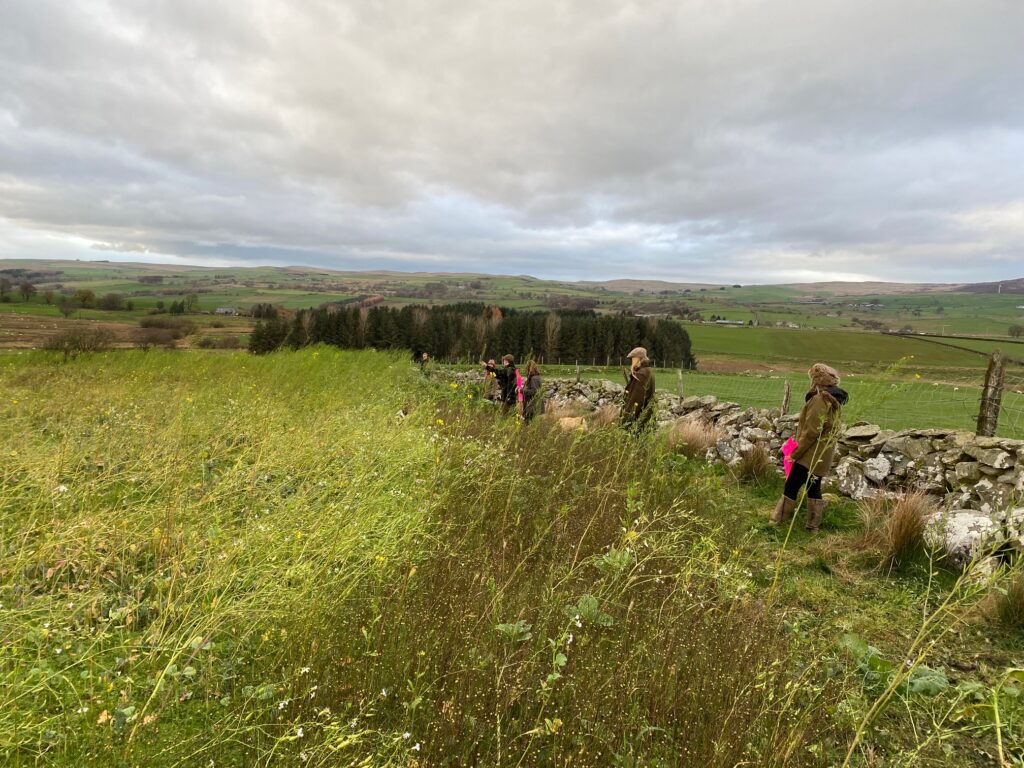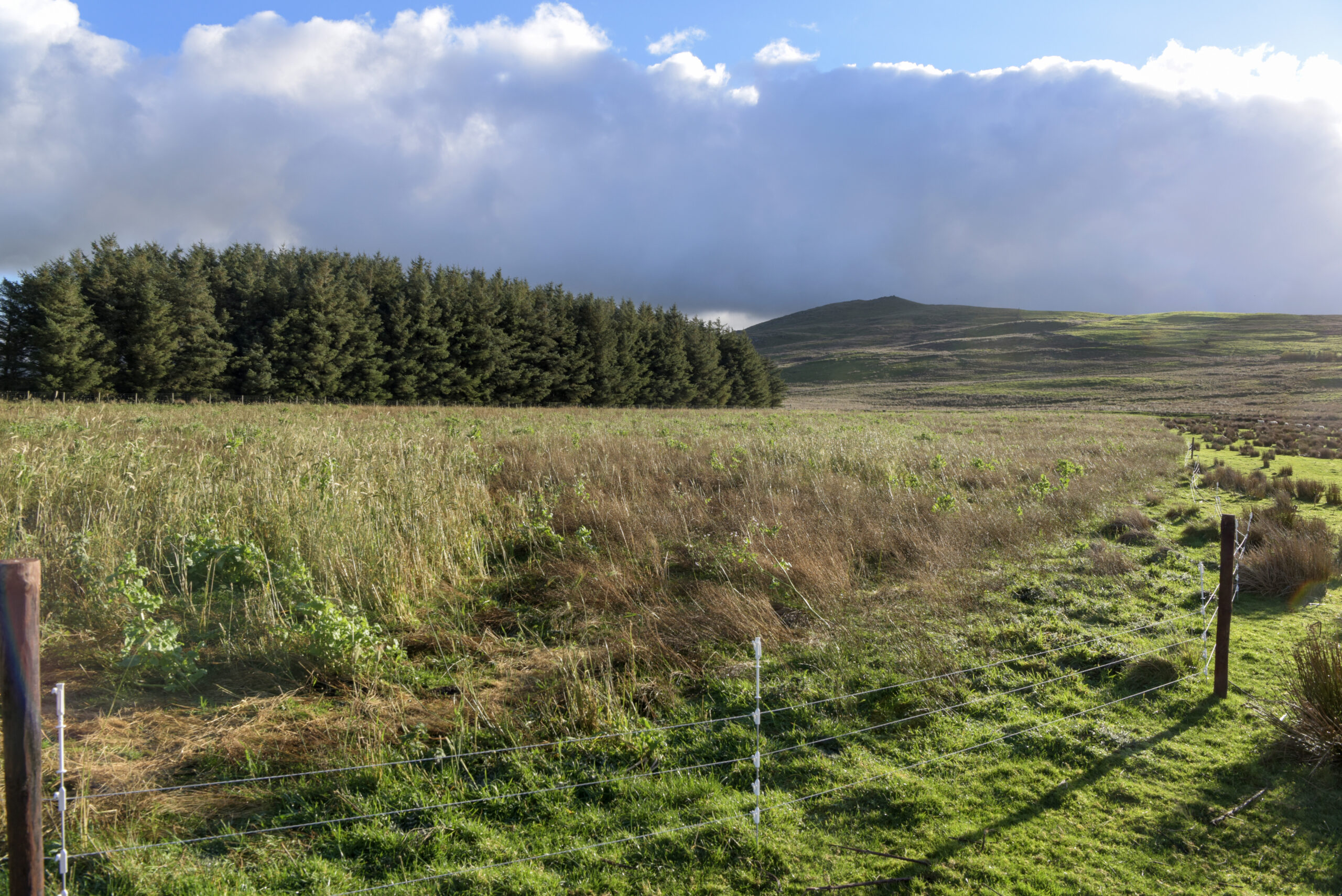Agri-environment schemes have failed in the past, but John Warburton-Lee is piloting a new approach with the potential to reverse songbird declines in the Welsh uplands

John Warburton-Lee describes Gilar, his 500-acre farm in North West Wales, as “having every agricultural god stacked against us. In winter it blows holy hell up here!” The rugged ground is north-facing and ranges from 900ft to 1,700ft, but in spite of the harsh conditions, he is determined to show that it is possible to reverse the decline of songbirds on the farm.
Working with GWCT Wales and Kings Seeds, John has committed to a three-year demonstration project funded by the European Innovation Partnership to establish wild bird crop mixes and put out food in the hungry gap. He said: “Additional feeding with the buckets is easy, but the cover crops will be more of a challenge. Like many livestock farms, we are no longer equipped to sow seeds, so will have to pay a contractor.”
Farm facts
- Location: Gilar Farm, Pentrefoelas, Conwy, North West Wales
- Conservation focus: Increasing songbirds
- Farm type: sheep
- Acreage: 500 divided between upland, middle ground and lowland pasture with occasional fodder root crops in the low ground, 90 acres of woodland blocks
- Conservation measures: Cover crops, supplementary feeding, woodland management
One of the aims of the project is to demonstrate that, in future, wild bird schemes need to allow farmers a variety of crop mixes to suit different conditions. At Gilar both three-acre plots of seed-bearing crops are over 1,000ft and include King’s Highland mix designed specifically for upland areas. In contrast, the other demonstration site is a lowland organic dairy farm, which can support less hardy plants. In addition, a tonne of seed is distributed between two 20kg farmland feeder buckets from 1 December to 30 April.
These simple measures are designed to compensate for the disappearance from the Welsh uplands of arable and hay meadows, which has contributed to a 55% decline in farmland birds throughout Wales in the past 50 years. Farms traditionally supported a range of wild grasses and flowers for insects and provided nesting habitat and seeds for birds. A mix of sheep and cattle would have meant a range of sward heights suitable for wading birds, and there would have been some wheat and barley for home consumption or to feed the animals. The headage payments introduced in the 80s and 90s meant parts of the Welsh uplands became overgrazed. In many places, wildflowers, less resilient grasses, and hedgerows were lost.

John said: “We should never lose sight of the fact that we farm the way we do because at the end of the war the country was critically short of food, and so for the next 50 years farmers were directed by government to intensify production. To then hold the farmer up as the bad guy for the resulting environmental impact of that intensification is grossly unfair. Farmers are simply trying to survive in a business controlled by subsidy and government policy.”
In John’s experience, the lack of understanding of these pressures meant the previous generation of agri- environment schemes failed to engage farmers and thus did not achieve their aims. Contracts were too complicated and inflexible, which meant that, for farmers on the ground, they were often unworkable. Most demoralising was the threat of a fine if you unintentionally deviated slightly from the agreement. He said: “Farmers were asked to supply unbelievably accurate details specifying the exact amount of rock, gorse, bracken, trees and streams on every field on their farm. If we made a slight mistake we were threatened with a fine.”
Another problem was the one-size- fits-all approach, with prescriptions that may be possible on one farm but totally impractical on another. John explained: “One option stipulated that you had to manage the sward within a tight minimum and maximum height margin. That may be achievable on a perfect lowland farm, but there are days when you can barely stand up on the hill at Gilar because it’s blowing so hard and there are rocks everywhere, which makes cutting very difficult. Yet, the government still sent inspectors round to measure the length of the grass and punished the farmer if it wasn’t perfect. That’s why, historically, agri-environment schemes in Wales haven’t achieved anything like the take-up hoped for.”
So what would John like to see in the new generation of agri-environment schemes post-Brexit? He is convinced that if the government wants to hit its biodiversity targets, it must engage, inspire and incentivise the farming community, and recognise that farmers are willing and capable of delivering the desired environmental outcomes. He said: “I think there’s a huge need for a change of approach on behalf of government. Farming is tough and many farms operate at little better than subsistence level. Welsh farmers care passionately about their land, the environment, and the farming way of life. They don’t go out to deliberately denude the landscape and should be valued as partners, but that’s not how it feels. It’s more like Big Brother is watching you and inspectors are trying to catch you out if you have got something wrong, rather than helping you put it right.”
John’s top tips for new schemes
- Keep it simple
- More flexibility, fewer fines
- Tailor options to specific farms
- Funding for income foregone
For the new schemes to succeed, they need to be easy to implement and farmers need access to expert guidance. John said: “We need to have a simple choice of three seed mixes – one that works at 500ft, one at 1,000ft, and one at 1,500ft – and good practical advice on hand. GWCT Wales is one of the few organisations that can provide that and is hugely welcomed. This is especially true for smaller farms, which simply don’t have the resources to wade through highly complex schemes.”
To avoid failure, government must prioritise key requirements in specific locations, in concert with the local knowledge of the farmer. John explained:“Conversations around the environment need to acknowledge that delivering one public good may well be at the expense of another. For example, there’s a strong policy drive around both planting trees and retaining water in the uplands, but the reality in North Wales is that your ground can become super saturated. At Gilar we lost five acres of trees in a night during a gale. The long-term rocking action of trees on wet ground creates a soup of mud under their root plates, so in a storm, the trees just blow over. There is no point paying farmers to plant woodland if we are not allowed to put in required drainage.”

With margins so tight, financial incentive is obviously hugely important, too. John believes if such schemes are to take off, they need to compensate for lost income. He said: “My farming partner, Trystan Edwards, works phenomenally hard. He’s rightly proud of the sheep flock he has built up in the face of all the challenges at Gilar. If we are to take land out of production to deliver an environmental benefit, then there has to be a payment for establishment as well as income foregone.”
Furthermore, the financial pressure on hill farmers will only increase as CAP subsidies are withdrawn, making it harder to reduce intensity unless sufficient funding is available. In this context, any risk of losing money from fines will be a huge disincentive from entering schemes. John said: “As farmers, we cannot control the climate and every year we are seeing more extreme weather events. What happens if the weather turns against us and we can’t get cover crops established in line with the scheme specifications – will we end up with a financial penalty?”
For Welsh farmers to commit to delivering public goods they must also be able to derive a fair price for the food they produce, a price that reflects the higher environmental and welfare standards that UK legislation demands, and the lower carbon footprint that is now being sought by government. John said: “Cheap food has an enormous negative biodiversity impact and almost inevitably increases the carbon footprint. When I was a child, the British housewife was strongly encouraged to ‘Buy British’ and it was considered wrong to eat Danish bacon and butter, but we’ve lost sight of that and gone for the cheapest option. If the government wants us to deliver biodiversity and carbon capture, it must protect us from cheap imports and encourage campaigns to buy Welsh to support the local environment and community.”
Despite all the challenges, John believes the secret to reversing biodiversity decline and tackling climate change is for government and policymakers to engage with the farming community. He said: “Farmers have a proven track record of adaptation. Any policy initiative needs to go out to consultation to a broad variety of farmers. Combatting climate change is hugely complex and we need to consider the unintended consequences of all new initiatives. Take the proposed reduction in meat production, for example. Few places in the world can grow grass as well as Wales. It is the perfect environment for raising sheep and beef in harmony with nature. Surely that is better than sourcing more of our meat from countries like Brazil, where the rainforest is felled to make way for cattle or to produce soya. In fact, if you are looking to mitigate climate change on a global level, provided it is done extensively with minimal environmental impact, we ought to have more sheep and cattle in Wales, not fewer.”

The scheme John is trialling has shown real potential already. Though it’s still early days, this year’s counts show that, in the first year, just one tonne of supplementary feed and six acres of cover crops have resulted in six times the number of farmland birds. “I think it would be great if simple schemes like this enabled farmers to deliver environmental benefit alongside meat production. We have the evidence that it works and will continue to monitor it. I’m hopeful we can demonstrate to both government and farmers that it’s an incredibly simple and highly effective thing to do. If we had big enough take up, I believe it could go a long way to reversing biodiversity decline.”
Research in Practice
Dr Siân Whitehead
GWCT English Uplands, Postdoctoral Research Scientist
In England, regulations were recently updated to restrict heather burning following reports of negative effects, and this has led to a shift toward heather cutting. Results from our 2020-21 heather cutting experiment on grouse moors in Upper Teesdale showed that while cutting reduced vegetation height by an average of 62%, moss depth fell by nearly 40%. When the cut areas were assessed, it was clear that in some places the important peat-building sphagnum mosses had been ‘scalped’ and other mosses had been completely removed. We also found that cutting resulted in a largely flat and uniform surface, regardless of the size or complexity of the moss hummock and hollow structure that was present before cutting. Our results indicate that heather cutting has an immediate impact on the moss layer and these short-term effects may influence its future response. Given how important healthy moss layers are to functioning blanket blogs, it is vital that long-term monitoring of cut vegetation is conducted. To be a sustainable alternative to heather burning, the negative effects of heather cutting need to be mitigated by benefits to land management and the ecosystem, and these need to be considered in relation to the emerging evidence around the effects of burning.
